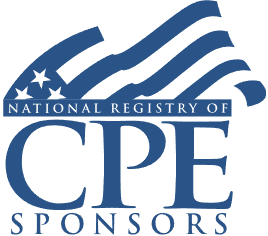Real Estate Professional Tax Status: Electing Aggregation, Meeting the Material Participation Test, Avoiding NIIT

Course Details
- smart_display Format
On-Demand
- signal_cellular_alt Difficulty Level
Intermediate
- work Practice Area
Tax Preparer
- event Date
Friday, August 16, 2024
- schedule Time
1:00 p.m. ET./10:00 a.m. PT
- timer Program Length
110 minutes
-
BARBRI is a NASBA CPE sponsor and this 110-minute webinar is accredited for 2.0 CPE credits.
-
BARBRI is an IRS-approved continuing education provider offering certified courses for Enrolled Agents (EA) and Tax Return Preparers (RTRP).
This course will explain the criteria that must be met for a taxpayer to be considered a real estate professional. Our panel of real estate taxation experts will discuss how real estate professionals meet the material participation tests and the advantages and drawbacks of this designation.
Faculty

Mr. Lovett has extensive experience serving the tax needs of both public companies and closely-held businesses, including all aspects of tax compliance for partnerships and corporations. He advises clients with regard to the structure and tax consequences of new business ventures, and assists with restructuring existing businesses for increased tax efficiency. Prior to joining his firm, he was with a “Big 4” accounting firm, working closely with large, multinational real estate investment companies.

Ms. Palovick specializates in real estate, and focuses most of her time in the areas of partnership and individual taxation. She assists in all areas of compliance as well as tax planning and succession planning.
Description
Qualifying as a real estate professional and meeting the material participation guidelines can allow taxpayers to avoid rental income or loss classification as passive. Passive losses are often suspended, waiting for either offsetting passive income or the disposition of the property itself. Passive income can be troublesome, subjecting certain taxpayers to the additional 3.8 percent net investment income tax (NIIT).
Taxpayers often have several rental activities. Each separate rental activity must meet the material participation rules for real estate professionals unless an election is made under Reg. Sect. 1.469-9(g), allowing real estate activities to be aggregated. The election, however, is binding until specific requirements are met and the election is revoked. Aggregating rental activities can also affect future loss deductions of individual properties within the group.
Tax professionals working with a rental real estate business need to understand both the benefits and the caveats of the real estate professional designation. The panel will address when rental property qualifies as a trade or business, considerations before electing to aggregate rental activities, and the requirements to meet the safe harbor under Section 1411 to avoid NIIT.
Listen as our panel of real estate taxation experts discusses how real estate professionals meet the material participation tests and the advantages and drawbacks of this designation. This webinar will explain the criteria that must be met for a taxpayer to be considered a real estate professional.
Outline
- Real estate professionals
- Passive vs. non-passive losses
- Criteria
- Material participation
- Criteria
- NIIT
- Trade or business income
- Criteria
- 199A
- Aggregation
- Making the election
- Revocation
- Retroactive application
- Deducting suspended and disposition losses
- Other considerations
Benefits
The panel will review these and other critical issues:
- Electing to aggregate real estate activities under Regulation Section 1.469-9(g)
- What constitutes a real estate trade or business?
- Revoking the aggregation election
- Meeting the material participation test
- When is rental real estate subject to NIIT?
- When does real estate qualify for the 199A deduction?
NASBA Details
Learning Objectives
After completing this course, you will be able to:
- Determine what constitutes a real estate trade or business
- Identify the material participation tests
- Establish the requirements to be a real estate professional
- Differentiate between passive and non-passive losses
- Decide when to aggregate real estate activities under Reg. Section 1.469-9(g)
- Establish when real estate qualifies for the IRC 199A deduction
- Field of Study: Taxes
- Level of Knowledge: Intermediate
- Advance Preparation: None
- Teaching Method: Seminar/Lecture
- Delivery Method: Group-Internet (via computer)
- Attendance Monitoring Method: Attendance is monitored electronically via a participant's PIN and through a series of attendance verification prompts displayed throughout the program
- Prerequisite: Three years+ business or public firm experience preparing complex tax forms and schedules, supervising other preparers or accountants. Specific knowledge and understanding of pass-through taxation, including taxation of partnerships, S corporations and their respective partners and shareholders.

Strafford Publications, Inc. is registered with the National Association of State Boards of Accountancy (NASBA) as a sponsor of continuing professional education on the National Registry of CPE Sponsors. State boards of Accountancy have final authority on the acceptance of individual courses for CPE Credits. Complaints regarding registered sponsons may be submitted to NASBA through its website: www.nasbaregistry.org.

Strafford is an IRS-approved continuing education provider offering certified courses for Enrolled Agents (EA) and Tax Return Preparers (RTRP).
Unlimited access to premium CLE courses:
- Annual access
- Available live and on-demand
- Best for attorneys and legal professionals
Unlimited access to premium CPE courses.:
- Annual access
- Available live and on-demand
- Best for CPAs and tax professionals
Unlimited access to premium CLE, CPE, Professional Skills and Practice-Ready courses.:
- Annual access
- Available live and on-demand
- Best for legal, accounting, and tax professionals
Unlimited access to Professional Skills and Practice-Ready courses:
- Annual access
- Available on-demand
- Best for new attorneys
Related Courses

2025 Tax Legislation: The One Big Beautiful Tax Bill Act
Thursday, July 31, 2025
1:00 p.m. ET./10:00 a.m. PT

Section 1202 Qualified Small Business Stock: OBBBA’s Expanded Benefits and Opportunities
Monday, July 28, 2025
1:00 p.m. ET./10:00 a.m. PT
Recommended Resources
How CPE Can Bridge the Gap Between What You Know and What You Need to Know
- Career Advancement